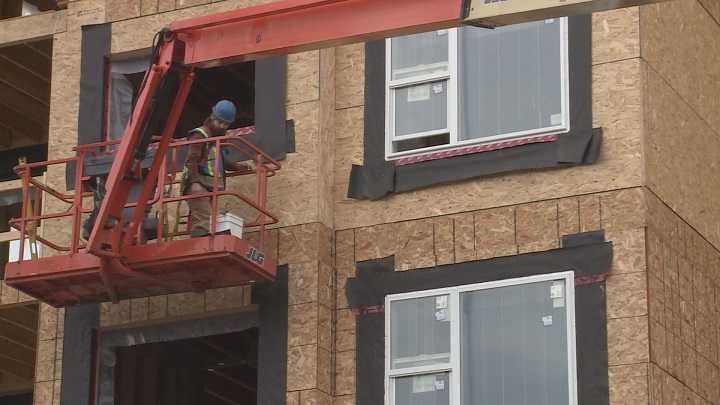Kelowna continues to be one of Canada’s leading cities when it comes to low unemployment rates.

On Friday, Statistics Canada released its monthly unemployment figures, and Kelowna had the third-lowest jobless rate in February at 5.2 per cent.
Topping the chart was Victoria, at 4.9 per cent, followed by Quebec City, at 5.0 per cent.
In January, Kelowna had the nation’s lowest unemployment rate, at 4.6 per cent.
In December, Kelowna’s rate was 4.5 per cent, down from 4.7 per cent in November.
For perspective, the national unemployment rate for February was 8.2 per cent. Provincially, B.C. had a jobless rate of 6.9 per cent, with Vancouver’s average at 7.9 per cent.

Elsewhere across western Canada, jobless rates were higher, with Alberta’s average at 9.9 per cent.
After Statistics Canada released its monthly report, B.C.’s jobs minister issued a statement, saying the province has nearly returned to its pre-pandemic job employment rates.
“One year into this pandemic, British Columbia has returned to 99.4 per cent of pre-pandemic employment levels,” said Ravi Kahlon.
“B.C.’s economy remains one of the strongest in Canada, having created jobs in each of the past 10 months.
“The labour force survey for February shows B.C. added 26,600 jobs, with the majority of those jobs going to women. This dropped B.C.’s unemployment rate to 6.9 per cent from 8.0 per cent in January, the month before,” Kahlon said.

The minister continued, saying “in fact, employment in some parts of the province is above pre-pandemic levels. For example, Prince George is at 106.7 per cent and Kamloops is at 103.3 per cent.
“While this does not mean all sectors are back to full strength, it does mean that even as our tourism and hospitality sectors continue to struggle, our economy is growing.”
However, the BC Liberals challenged Kahlon’s rosy outlook, stating that British Columbians still have 15,100 fewer jobs compared to pre-pandemic levels, with the majority of employment growth this February coming from part-time positions.
“These accounted for 84 per cent of the total jobs gained last month,” said the BC Liberals, “and the public sector increases were ten times larger than the private sector.”
They added that tourism-related sectors are down 40,200 jobs when compared to pre-pandemic levels.
“The devil is in the details as broad, sustainable economic recovery can only happen if it’s led by the private sector,” said Todd Stone, BC Liberal Critic for Jobs, Economic Recovery and Innovation.
“The first step in creating well-paid private sector full-time jobs and helping women regain footing in the labour market must be the immediate creation and implementation of a sector-by-sector jobs plan. (Premier) John Horgan also needs to bring targeted help tailored to the needs of women, who make up the bulk of the workforce in hard-hit sectors such as tourism.”

National averages
Below are February’s figures posted by Statistics Canada (with January’s stats in brackets):
- Unemployment rate: 8.2 per cent (9.4)
- Employment rate: 59.4 per cent (58.6)
- Participation rate: 64.7 per cent (64.7)
- Number unemployed: 1,665,100 (1,899,000)
- Number working: 18,531,200 (18,272,000)
- Youth (15-24 years) unemployment rate: 17.1 per cent (19.7)
- Men (25 plus) unemployment rate: 6.9 per cent (7.6)
- Women (25 plus) unemployment rate: 6.7 per cent (8.0)
Provincial averages
Jobless rates for February 2021 by province (with January’s stats in brackets):
- Newfoundland and Labrador 15.3 per cent (12.8)
- Prince Edward Island 9.2 per cent (7.9)
- Nova Scotia 8.1 per cent (8.3)
- New Brunswick 8.9 per cent (8.8)
- Quebec 6.4 per cent (8.8)
- Ontario 9.2 per cent (10.2)
- Manitoba 6.8 per cent (8.0)
- Saskatchewan 7.3 per cent (7.2)
- Alberta 9.9 per cent (10.7)
- British Columbia 6.9 per cent (8.0)

City averages
Jobless rates for February 2021 by city (with January’s stats in brackets):
- St. John’s, N.L., 9.4 per cent (8.8)
- Halifax, N.S., 8.1 per cent (7.5)
- Moncton, N.B., 9.2 per cent (9.2)
- Saint John, N.B., 12.2 per cent (12.1)
- Saguenay, Que., 5.9 per cent (6.3)
- Quebec City, Que., 5.0 per cent (4.7)
- Sherbrooke, Que., 6.2 per cent (6.2)
- Trois-Rivieres, Que., 6.7 per cent (6.8)
- Montreal, Que., 8.2 per cent (8.5)
- Gatineau, Que., 7.6 per cent (7.3)
- Ottawa, Ont., 6.1 per cent (6.5)
- Kingston, Ont., 7.3 per cent (6.5)
- Peterborough, Ont., 12.5 per cent (12.8)
- Oshawa, Ont., 8.0 per cent (8.4)
- Toronto, Ont., 11.1 per cent (11.1)
- Hamilton, Ont., 7.1 per cent (6.8)
- St. Catharines-Niagara, Ont., 12.4 per cent (11.5)
- Kitchener-Cambridge-Waterloo, Ont., 7.8 per cent (8.3)
- Brantford, Ont., 7.6 per cent (6.9)
- Guelph, Ont., 7.8 per cent (6.3)
- London, Ont., 6.9 per cent (7.7)
- Windsor, Ont., 10.7 per cent (10.3)
- Barrie, Ont., 13.0 per cent (14.2)
- Greater Sudbury, Ont., 8.7 per cent (7.9)
- Thunder Bay, Ont., 8.3 per cent (8.4)
- Winnipeg, Man., 8.3 per cent (8.8)
- Regina, Sask., 8.5 per cent (7.6)
- Saskatoon, Sask., 8.4 per cent (8.6)
- Calgary, Alta., 10.6 per cent (10.6)
- Edmonton, Alta., 11.6 per cent (11.9)
- Kelowna, B.C., 5.2 per cent (4.6)
- Abbotsford-Mission, B.C., 7.4 per cent (7.8)
- Vancouver, B.C., 7.9 per cent (7.8)
- Victoria, B.C., 4.9 per cent (5.0)
— With files from the Canadian Press




Comments